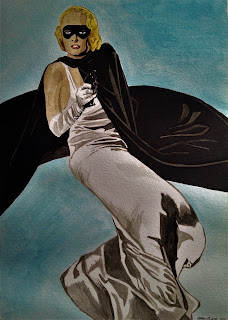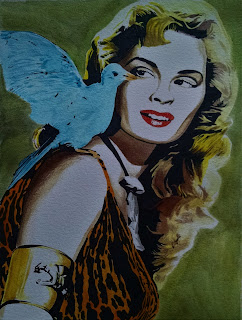
LEGENDARY HEROES #29 THE DOMINO LADY During the 1930s there were over 300 different pulp magazine titles published in America with subject matter that could appeal to most anyone, especially if you were a man. I've never seen any demographics to confirm this but I suspect that women were never a target audience. Which makes The Domino Lady quite unique in the history of the pulps, because she was the only costumed pulp heroine to star in her own series. Women were seldom the headliners in pulp stories. The Domino Lady first appeared in the May 1936 issue of Saucy Romantic Adventures. The magazine title was one of the "spicy pulps", a genre that featured risque short stories and covers that showcased women in a state of undress. Actually the stories were pretty tame by today's standards, but in the 1930s any story that had a woman semi-dressed or (heaven forbid) undressed in front of a man was considered pretty hot stuff. The stories were often about two-fiste



